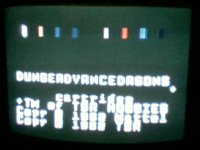Grandcheapskate
Veteran Member
I was in Micro Center the other day and saw reproductions of both the Intellivision and Coleco Color consoles. I know nothing about the Coleco but I do have the original Intellivision. These are not exact reproductions as the Intellivision does not accept the original cartridges and is smaller in size but seems to come with 60 games stored in memory.
Just an interesting and nostalgic item should anyone be interested.
Joe
Just an interesting and nostalgic item should anyone be interested.
Joe

